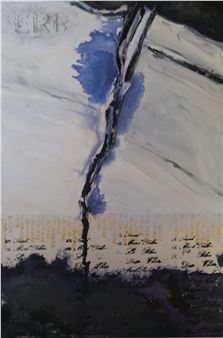Guy Tillim: Lusochroma
STEVENSON is pleased to present Lusochroma, a solo exhibition by Guy Tillim.
Following Avenue Patrice Lumumba, Joburg: Points of View, Museum of the Revolution and Hotel Universo, this body of work represents the latest chapter of Tillim’s long-term investigation into the traces of colonial power in southern Africa. Across the colour and monochromatic works in this new chapter, the artist makes interventions on his pigment prints using acrylic paint, signalling a shift in his aesthetic and archival interests.
Cities have been the stage for both the establishment and abolition of colonialism, their trajectories often such that they witness and facilitate the transformation of socialist, post-independent societies into capitalist regimes. Their monuments, structures and urban planning reflect such transitions; as a whole, cities are de facto monuments to an epoch.
Lusochroma, offering an interpretive window into how these epochs flow through cities, unfolds along four sections: the titular selection features colour images taken in Quelimane, Beira and Maputo in Mozambique; Colony presents a more abstracted view of colonial monuments across Congo; Luanda focuses on the vibrancy of the streets in the Angolan capital; and Republic, composed from Tillim’s most recent street photographs, interrogates the status quo in South Africa.
Aside from those in Republic, the photographs were all taken in the early 2000s; the artist recently reconfigured their size to a more intimate scale and altered their surfaces through geometric interventions with kaleidoscopic effects. In the artist’s words:
With the painting there's a need I have to postpone recognition of the photograph. So that the elements can be seen for themselves, outside of the obvious political dimension. I have a desire to be somehow transported in a present sense rather than by a journey into the past. Why this choice? I think, simply, it's my reaction to the way I had tended to practice photojournalism, which is to say, trading on instantly recognisable iconography.
Bauhaus is certainly an influence, particularly Laszlo Maholy-Nagy. Their geometrical shapes and accessibility have this irresistible communication with modern buildings of a certain era I saw in Maputo. There is something deliberate in the act of painting on the photos with these shapes that gives a resulting image a sculptural dimension.

Recommended for you
STEVENSON is pleased to present Lusochroma, a solo exhibition by Guy Tillim.
Following Avenue Patrice Lumumba, Joburg: Points of View, Museum of the Revolution and Hotel Universo, this body of work represents the latest chapter of Tillim’s long-term investigation into the traces of colonial power in southern Africa. Across the colour and monochromatic works in this new chapter, the artist makes interventions on his pigment prints using acrylic paint, signalling a shift in his aesthetic and archival interests.
Cities have been the stage for both the establishment and abolition of colonialism, their trajectories often such that they witness and facilitate the transformation of socialist, post-independent societies into capitalist regimes. Their monuments, structures and urban planning reflect such transitions; as a whole, cities are de facto monuments to an epoch.
Lusochroma, offering an interpretive window into how these epochs flow through cities, unfolds along four sections: the titular selection features colour images taken in Quelimane, Beira and Maputo in Mozambique; Colony presents a more abstracted view of colonial monuments across Congo; Luanda focuses on the vibrancy of the streets in the Angolan capital; and Republic, composed from Tillim’s most recent street photographs, interrogates the status quo in South Africa.
Aside from those in Republic, the photographs were all taken in the early 2000s; the artist recently reconfigured their size to a more intimate scale and altered their surfaces through geometric interventions with kaleidoscopic effects. In the artist’s words:
With the painting there's a need I have to postpone recognition of the photograph. So that the elements can be seen for themselves, outside of the obvious political dimension. I have a desire to be somehow transported in a present sense rather than by a journey into the past. Why this choice? I think, simply, it's my reaction to the way I had tended to practice photojournalism, which is to say, trading on instantly recognisable iconography.
Bauhaus is certainly an influence, particularly Laszlo Maholy-Nagy. Their geometrical shapes and accessibility have this irresistible communication with modern buildings of a certain era I saw in Maputo. There is something deliberate in the act of painting on the photos with these shapes that gives a resulting image a sculptural dimension.
Artists on show
Contact details

Related articles
STEVENSON presents Ukwanda kwaliwa ngumthakathi, Mawande Ka Zenzile’s 10th solo exhibition with the gallery and Lusochroma, a solo exhibition by Guy Tillim.













